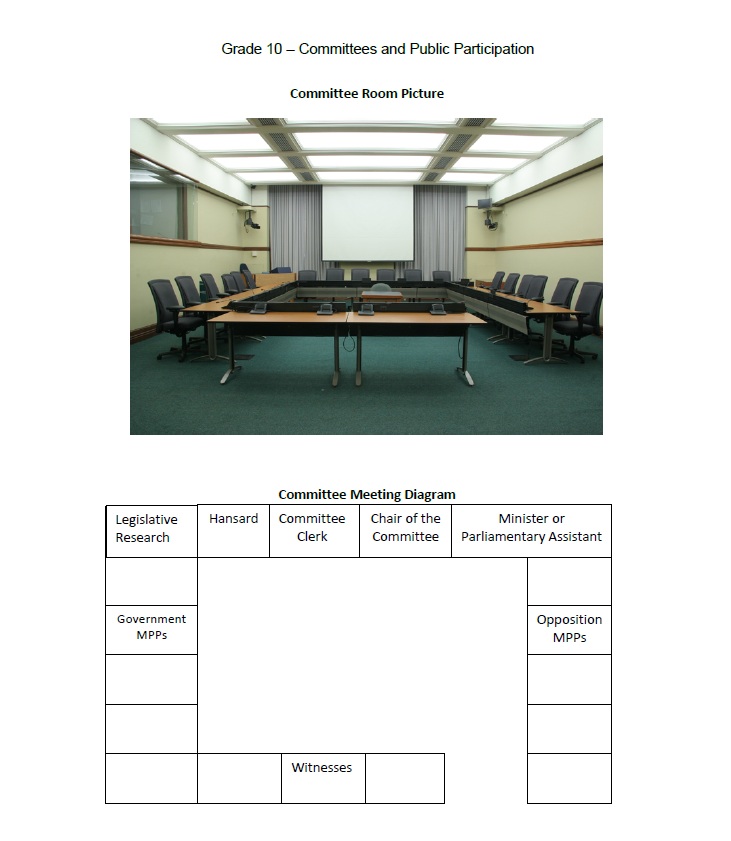|
Introductory Discussion (10-15 minutes)
How do bills become law in Ontario?
What is a committee – what is the difference between standing and select committees?
Who sits on a committee - are they all government members?
What are some of the roles required to form a committee? (MPPs, a chair, a Clerk, witnesses, interpreters, etc.)
What are some of the current political issues that are affecting Ontarians?
In preparation for the committee hearing, discuss and debate the pros and cons of a proposed bill currently in the Legislature.
Hold a Committee Hearing (45-60 minutes)
Part 1 - Committee Hearing Preparation (15-20 minutes)
As a class, pick one political issue to discuss in your committee (for example, no texting or talking on the phone while driving) and discuss reasons for and against the bill being proposed. Consider the views of each political party on this issue.
Assign students roles for the committee - 9 MPPs representing each political party (including a Committee Chair), a Clerk (the teacher) and witnesses (everyone else). Some witnesses should have opposing viewpoints.
In groups, students who are the MPPs must discuss the following (10 minutes):
- What is the issue at hand
- Consider the positive and negative impacts of the bill
- What questions do they have for the witnesses
In groups, students who are assigned as witnesses must discuss the following (10 minutes):
- What is their stance - do they support or oppose the bill?
- What do they want to tell the committee - do they want to suggest changes to the bill or are they completely opposed to it?
- Each witness must prepare a statement supporting their view to present to the committee
While students are discussing their talking points, arrange the classroom to match the set-up diagram below.
Part 2 - Holding the Committee (20-30 minutes)
The Chair of the committee will announce why the committee is meeting and what will be discussed. The Chair will then invite the first witness forward to address the committee.
Witnesses will give their statement, stating their opinion and how the decision will affect them or others.
The committee members (MPPs) will then ask questions that will assist them in preparing their report.
Continue through the witnesses until everyone has had a chance to speak.
The MPPs will then discuss their recommendation to the House (teacher) and on how to proceed with the issue.
The House (teacher) will take the committee’s recommendations into consideration and make a decision.
Group discussion (10-15 minutes)
Divide students into groups of 3-4 to discuss the following questions:
- How do you feel about public participation in the committee process?
- Do members of the public get enough say in what happens in government in Ontario?
- Is it fair that the public is not allowed to participate in debates that take place in the Legislative Chamber? Do you agree with this?
|


